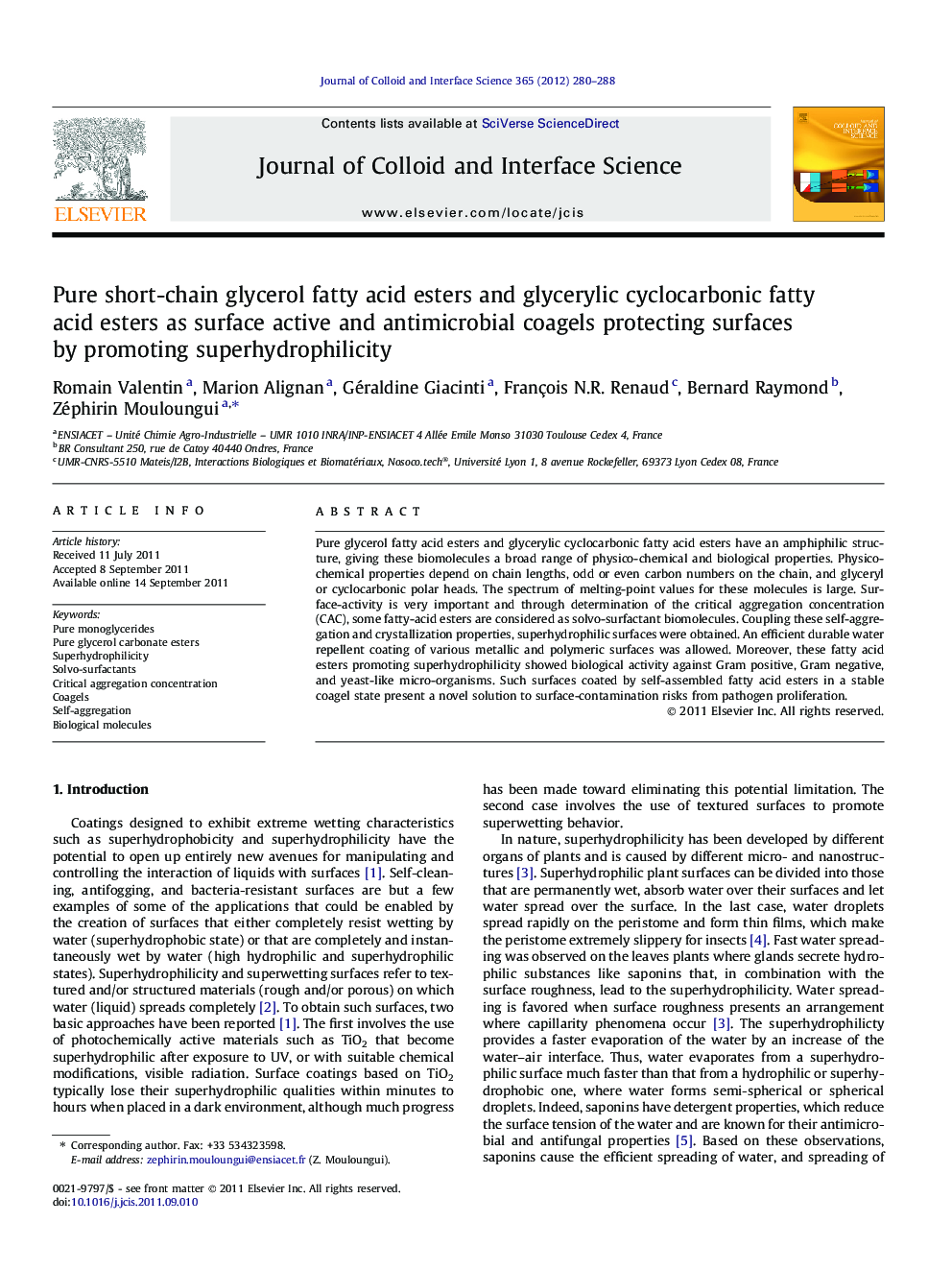| Article ID | Journal | Published Year | Pages | File Type |
|---|---|---|---|---|
| 608478 | Journal of Colloid and Interface Science | 2012 | 9 Pages |
Pure glycerol fatty acid esters and glycerylic cyclocarbonic fatty acid esters have an amphiphilic structure, giving these biomolecules a broad range of physico-chemical and biological properties. Physico-chemical properties depend on chain lengths, odd or even carbon numbers on the chain, and glyceryl or cyclocarbonic polar heads. The spectrum of melting-point values for these molecules is large. Surface-activity is very important and through determination of the critical aggregation concentration (CAC), some fatty-acid esters are considered as solvo-surfactant biomolecules. Coupling these self-aggregation and crystallization properties, superhydrophilic surfaces were obtained. An efficient durable water repellent coating of various metallic and polymeric surfaces was allowed. Moreover, these fatty acid esters promoting superhydrophilicity showed biological activity against Gram positive, Gram negative, and yeast-like micro-organisms. Such surfaces coated by self-assembled fatty acid esters in a stable coagel state present a novel solution to surface-contamination risks from pathogen proliferation.
Graphical abstractFigure optionsDownload full-size imageDownload high-quality image (142 K)Download as PowerPoint slideHighlights► Superhydrophilic surfaces coated by fatty acid esters. ► Fatty acid esters behave like solvo-surfactants. ► Structure, texture and solvo-surfactive properties induce superhydrophilicity. ► Fatty acid esters present anti microbial activity.
